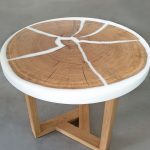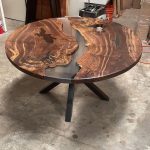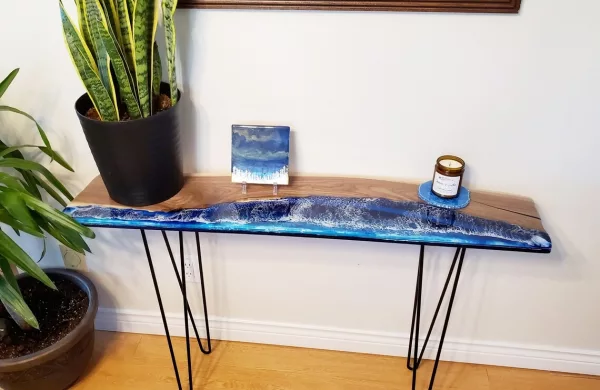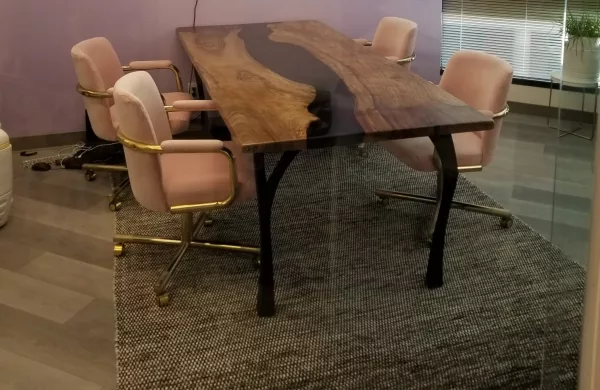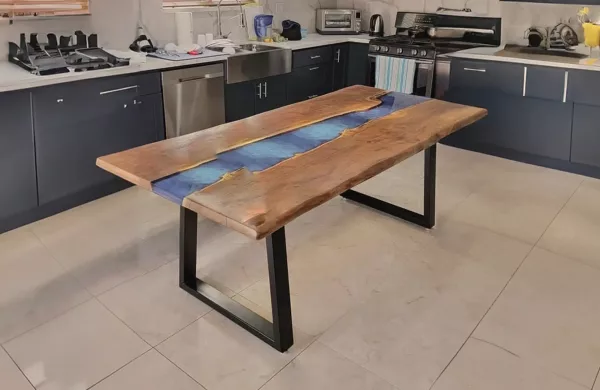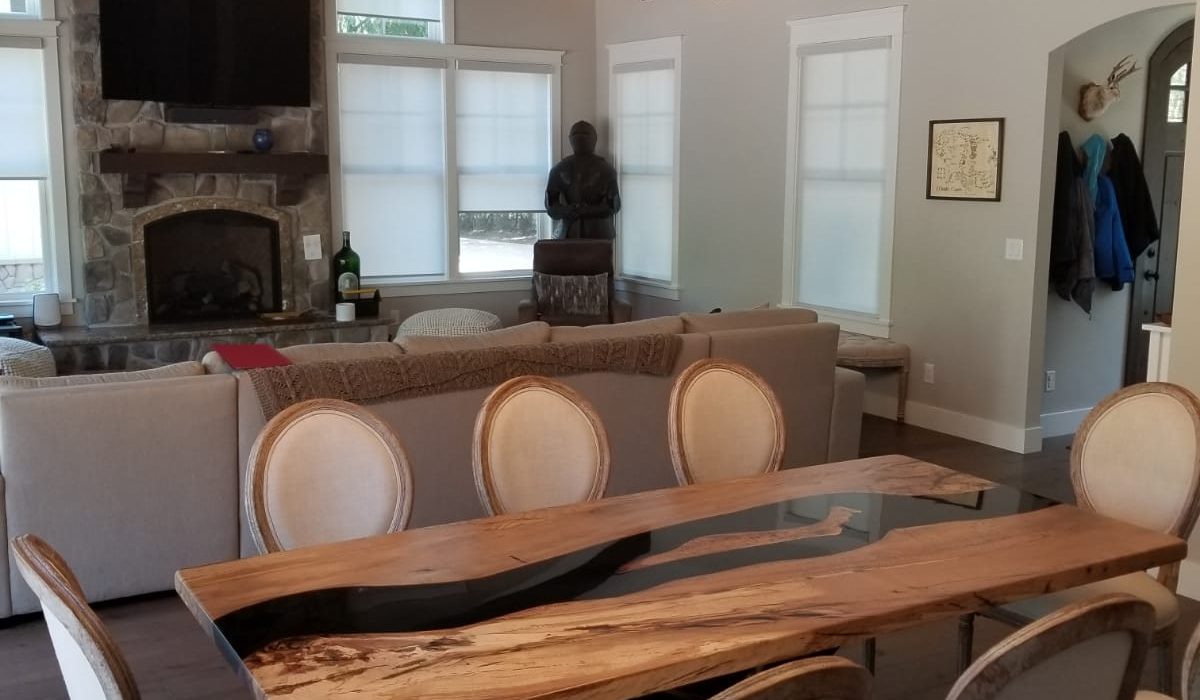
The lifespan of an epoxy table can vary based on several factors, but a well-made and well-maintained epoxy table can last for decades. Here are some of the primary factors that can influence the longevity of an epoxy table:
- Quality of Epoxy Resin Used: Not all epoxy resins are created equal. High-quality epoxy will resist yellowing, have better adhesion, and provide a longer-lasting finish. UV-resistant epoxies are essential if the table will be exposed to sunlight, as they will help prevent the epoxy from yellowing over time.
- Environmental Exposure: Epoxy tables used indoors and kept out of direct sunlight and away from extreme temperature fluctuations will typically last longer than those exposed to the elements.
- Usage: A table that experiences heavy, daily use will show wear faster than one used infrequently. Regular exposure to heavy items, sharp objects, or hot dishes can cause scratches, dents, or other forms of damage.
- Maintenance: Regular cleaning with non-abrasive cleaners and soft cloths can keep the epoxy looking shiny and new. Protective measures, such as using coasters for drinks or placemats for dishes, can prevent potential damage.
- Thickness of the Epoxy Layer: A thicker layer of epoxy might provide more protection and durability than a thin one, especially against surface scratches.
- Construction Quality: How well the epoxy table is constructed in the first place also plays a role. Properly sealed edges, good adhesion between the wood and epoxy, and a stable base can all contribute to a longer-lasting table.
- Potential Repairs: Epoxy can be repaired to some extent. If a table gets scratched or dented, it’s often possible to sand and re-coat the affected area with a new layer of epoxy, extending the table’s life.
- UV Protection: Over time, exposure to UV rays can cause the epoxy to yellow or degrade. Some epoxy resins have built-in UV stabilizers to reduce this effect, but it’s still a good idea to protect the table from excessive sunlight if possible.
When correctly crafted and cured, epoxy tables have the potential to endure for many years without significant repairs. Epoxy boasts heat resistance and impressive flexural durability. Yet, it’s worth noting that epoxy resin can take on a yellow hue over time, even without UV exposure. To mitigate this, use a high-quality UV-protective finish and avoid placing it under direct sunlight.
While epoxy is robust, it’s essential to treat your table with care to prolong its lifespan. Below are some handy guidelines on maintaining epoxy tables.
How to take care of epoxy table?
Taking care of an epoxy table ensures its longevity and preserves its aesthetic appeal. Here are some guidelines to help maintain your epoxy table:
- Regular Cleaning: Use a soft cloth or sponge with a gentle cleanser to wipe down the table. Avoid abrasive materials and harsh chemicals as they can scratch or damage the epoxy finish.
- Avoid Direct Sunlight: Extended exposure to UV rays can cause the epoxy to yellow over time. If possible, position your table away from direct sunlight or use UV-protective curtains.
- Use Protective Coverings: Employ coasters, placemats, or trivets to prevent direct contact with hot dishes, cold drinks, or items that might scratch the surface.
- Avoid Heavy Objects: Be cautious about placing heavy items on the table that might cause indentation or stress the epoxy.
- Heat Resistance: Although epoxy is generally heat-resistant, it’s not immune to heat damage. Avoid placing hot pots, pans, or other items directly on the epoxy surface.
- Address Spills Promptly: Clean up any spills immediately, especially if they are acidic or could potentially stain, like red wine or fruit juices.
- Protection from Scratches: Avoid sliding items across the table, and consider using a tablecloth when the situation demands it.
- Avoid Sharp Objects: Sharp items can scratch the epoxy surface. Always use cutting boards and avoid using knives or other sharp instruments directly on the table.
- Regular Inspections: Check for any signs of damage or wear periodically. If you spot minor scratches, you can often buff them out with fine-grit sandpaper followed by a polishing compound.
- Re-coating: Over time, if the table starts to lose its shine or gets numerous scratches, consider applying a fresh coat of epoxy resin to rejuvenate its appearance.
- Temperature and Humidity: Epoxy tables prefer stable environments. Try to keep the table in areas with consistent temperature and humidity levels.
- Moving the Table: If you need to move the table, ensure you lift it rather than dragging it to prevent undue stress or potential chipping at the table’s base.
By following these maintenance tips, you can ensure that your epoxy table remains in prime condition for many years.
In summary, with proper care and maintenance, an epoxy table can remain functional and aesthetically pleasing for many years, often decades. However, like all furniture, it will show signs of wear over time, and its lifespan can be influenced by various external factors.




